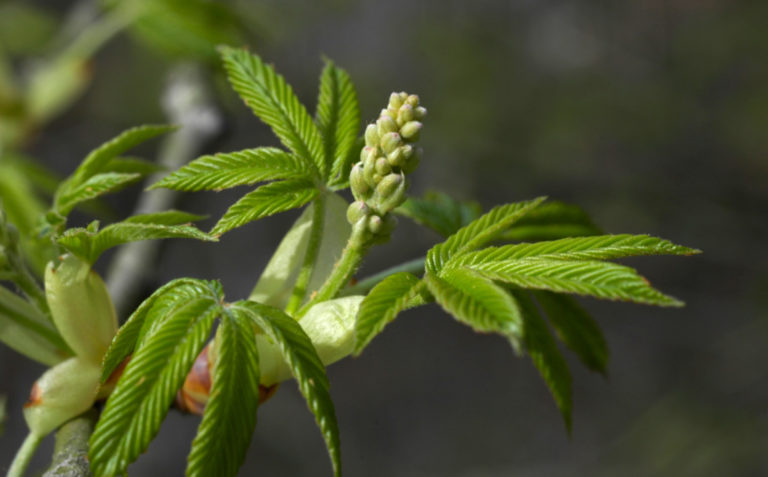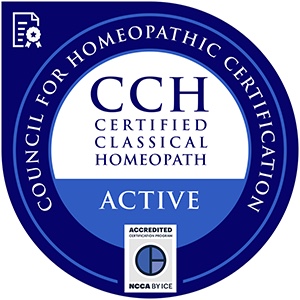Remedies for Hemorrhoids: Aesculus hippocastanum

Aesculus hippocastanum, also known as horse chesnut, is a large tree native to Europe and Asia. New leaves like the ones in the cover photo are a delicate yellowish green in the spring sun.
The seed of the horse chesnut is also called a buckeye or a conker, and they’re used in the English schoolyard game of conkers. According to legend, wrapping a buckeye in a dollar bill makes an amulet for attracting wealth. Carrying a buckeye in the pocket is supposed to protect against hemorrhoids.
Interestingly, the most well known homeopathic use for Aesculus is also in the treatment of hemorrhoids and other problems with venous swellings. The remedy has a strong affinity for the veins, especially the veins of the liver, abdomen, pelvis and rectum.
The hemorrhoids caused by Aesculus (and therefore treated by a homeopathic preparation of Aesculus) tend to be blue or bluish red, distended and incredibly painful, and they tend not to be comfortable in any position, whether lying, sitting or standing. The remedy has also been used successfully in cases of pelvic floor congestion and may include pains in the sacrum as if the back would give way.
The Aesculus hippocastanum patient will often be robustly built and athletic, or at least formerly so. He tends to enjoy the outdoors and vigorous physical activity, which helps to keep his circulation from stagnating. He may often feel warm and appreciate colder temperatures, which may also help to shrink distended veins.
Like the homeopathic remedies, Rhus toxicodendron (poison oak) and Anacardium orientale (marking nut), patients who need Aesculus also tend to have rheumatic pains and stiffness that may be relieved by continued movement.
###





